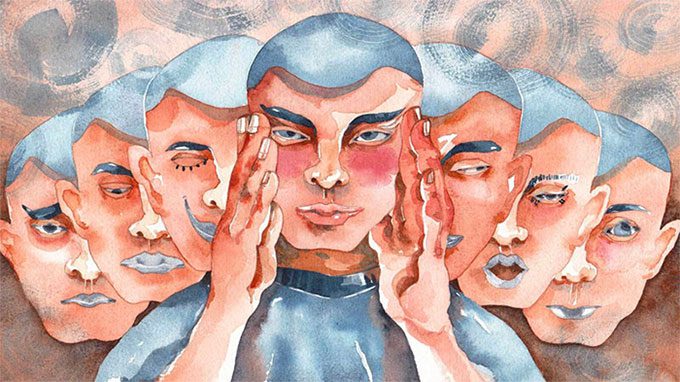Borderline Personality Disorder is characterized by instability, extreme sensitivity in relationships, an unstable self-image, and significant mood swings.
This article is professionally consulted by ThS.BS Hoàng Tiến Trọng Nghĩa, Head of the Neurology Department, Military Hospital 175.

Individuals with Borderline Personality Disorder often struggle to control their anger.
Characteristics
– Patients with Borderline Personality Disorder have a low tolerance for loneliness.
– They may go to great lengths to avoid abandonment, creating crises, such as engaging in suicidal behavior to encourage others to provide care and support.
– Comorbid conditions are common, and patients often experience:
- Mood disorders.
- Somatic symptom disorders.
- Gambling disorders.
- Substance use disorders.
Causes
- Childhood history.
- Genetics.
- Dysfunctional regulation of the brain and neuropeptide systems.
Symptoms and Signs
– Feelings of abandonment or neglect, accompanied by intense fear or anger.
– A tendency to rapidly and suddenly change perspectives about others. The shift from idealization to devaluation reflects a black-and-white thinking pattern (splitting between good and bad).
– They may empathize and care for someone, but only if they feel that person will always be there when needed.
– Difficulty controlling their anger, often resulting in intense outbursts.
- They often direct their anger towards caregivers or loved ones for perceived neglect or abandonment.
- After an outburst, patients frequently feel shame and guilt, reinforcing feelings of worthlessness.
– Sudden changes in self-image, which may manifest as abrupt shifts in goals, values, opinions, career, or friendships.
– Mood changes typically last only a few hours and rarely extend beyond a few days; these changes may reflect extreme sensitivity to interpersonal stressors.
– They often engage in self-destructive behaviors when close to achieving a goal.
– Impulsive behaviors leading to self-harm are common.
- Suicidal gestures, threats, or self-injury (e.g., cutting, burning) are very common.
- These self-destructive behaviors are often triggered by rejection, fear of abandonment, or disappointment from a caregiver or loved one.
– Episodes of dissociation, paranoid thoughts, and sometimes psychotic-like symptoms can be triggered by excessive stress, often related to fear of abandonment, whether real or imagined.
- In most patients, dissociative symptoms diminish over time, and the rate of relapse is low.
- However, functional status often does not improve as much as the symptoms do.
Diagnosis
– To diagnose Borderline Personality Disorder, the patient must exhibit a persistent pattern of unstable relationships, self-image, and emotions (emotional dysregulation) along with marked impulsivity.
– This condition is indicated when five or more of the following criteria are met:
- Desperate efforts to avoid real or imagined abandonment.
- Unstable and intense interpersonal relationships characterized by alternating between idealization and devaluation.
- An unstable self-image or sense of self.
- Impulsivity in at least two areas that are potentially self-damaging (e.g., unsafe sex, binge eating, reckless driving).
- Recurrent suicidal behavior, gestures, threats, or self-mutilating behavior.
- Rapid mood changes, lasting typically only a few hours and rarely more than a few days.
- Chronic feelings of emptiness.
- Inappropriate, intense anger or difficulty controlling anger.
- Transient, stress-related paranoid ideation or severe dissociative symptoms.
– Symptoms typically begin in early adulthood but may occur during adolescence.
Treatment
- Psychotherapy.
- Medication.
Explaining the Causes of Cannibalism





















































